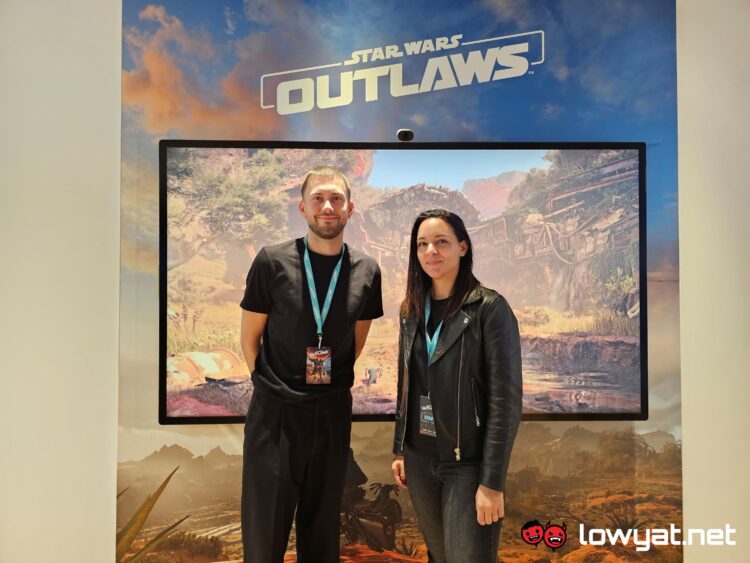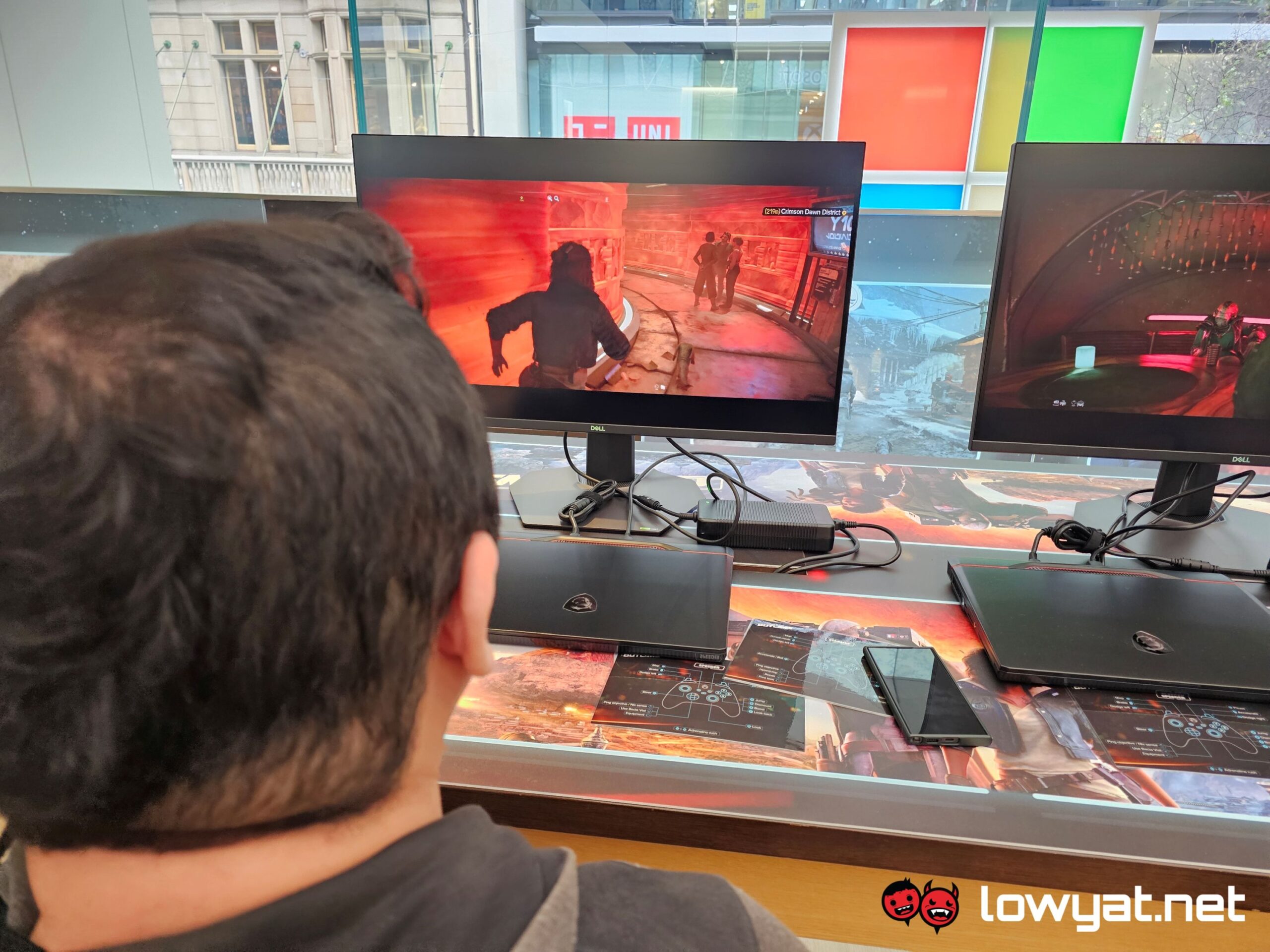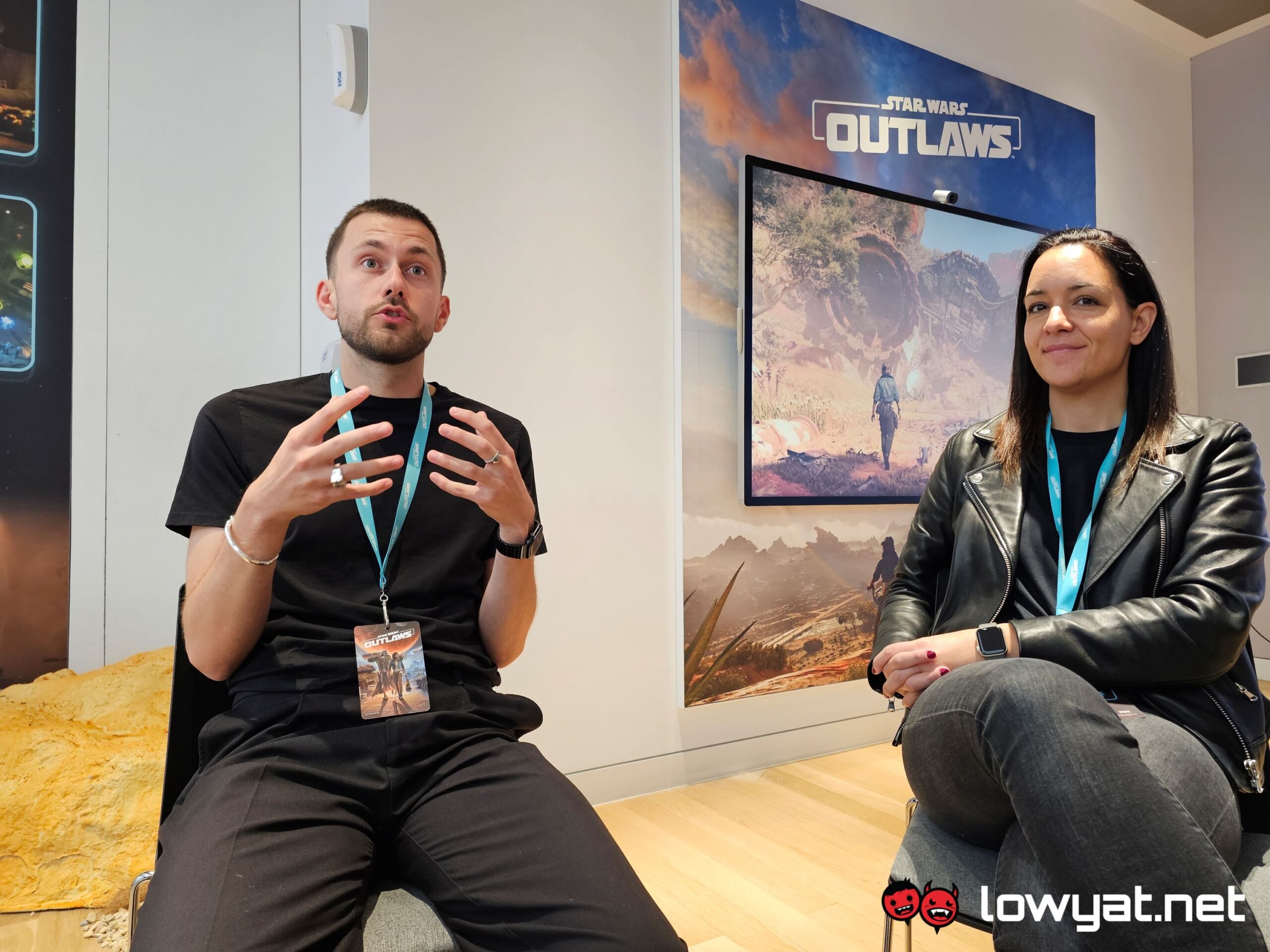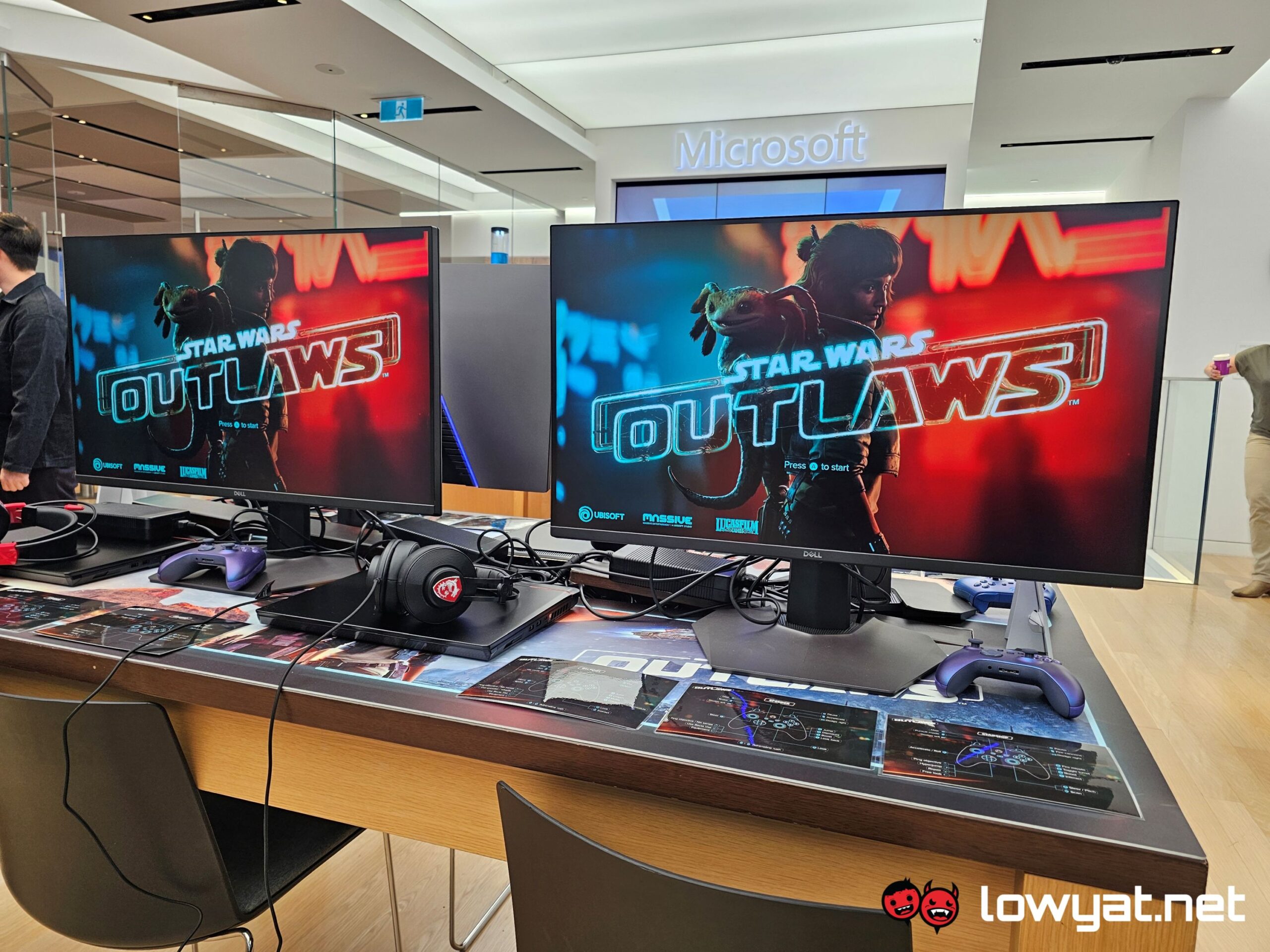Star Wars Outlaws is just a fortnight out from launch. It’s both Ubisoft and Massive Entertainment’s first foray into the open world (pun intended) of the Star Wars universe and they’ve spared no expense in keeping with the theme. From the finer details of an entire planet and its population, to the creation of an up-and-coming Scoundrel in the galaxy, there is no shortage in what the teams at Massive did in its world building.
To learn just a little bit more of the creative process that went into Outlaws, Ubisoft flew us down to Sydney, Australia, where we able to have a chat and fire off some quick question to Cloé Hammoud, World Director Associate at Massive Entertainment, and Samuel De Vos, the Lead Concept Artist at Massive Entertainment.
World building is clearly something you’re old hat with. With the Division, you’re actually designing based on real places, but with Star Wars, it’s all fictional areas obviously. Are there any sort of considerations you needed to take into account when creating the world of Outlaws?
Cloe: You know, it’s a really good question because it’s one of the biggest challenges that we faced when we started off and you know, we had it’s pretty much the same team and the same core team who worked on Division 2 and like you mentioned when we created Washington DC or New York. We had the layout of the cities we knew every single, you know, benches, light poles, the street grids, and I think that was very interesting for us to generate Star Wars Outlaws. So, we basically have a blank page: for example, with Toshara, we could have crafted a completely different city, so we had you know, we discuss with Lucasfilm games to make sure that our environments, our planets and cities have a sense of events would have this ratio that would look familiar, but also it’s a bit alien.
This is why Toshara, you know, the main capital is Mirogana, and it’s a bit like a sandwich in a big rock, and you have embarine, that is also an alien element. So we had to define all of these features and this is where you know world comes into play, and we decided a few sets of rules. And once we define this creative framework, the team can work with it and also be creative and expand on it.
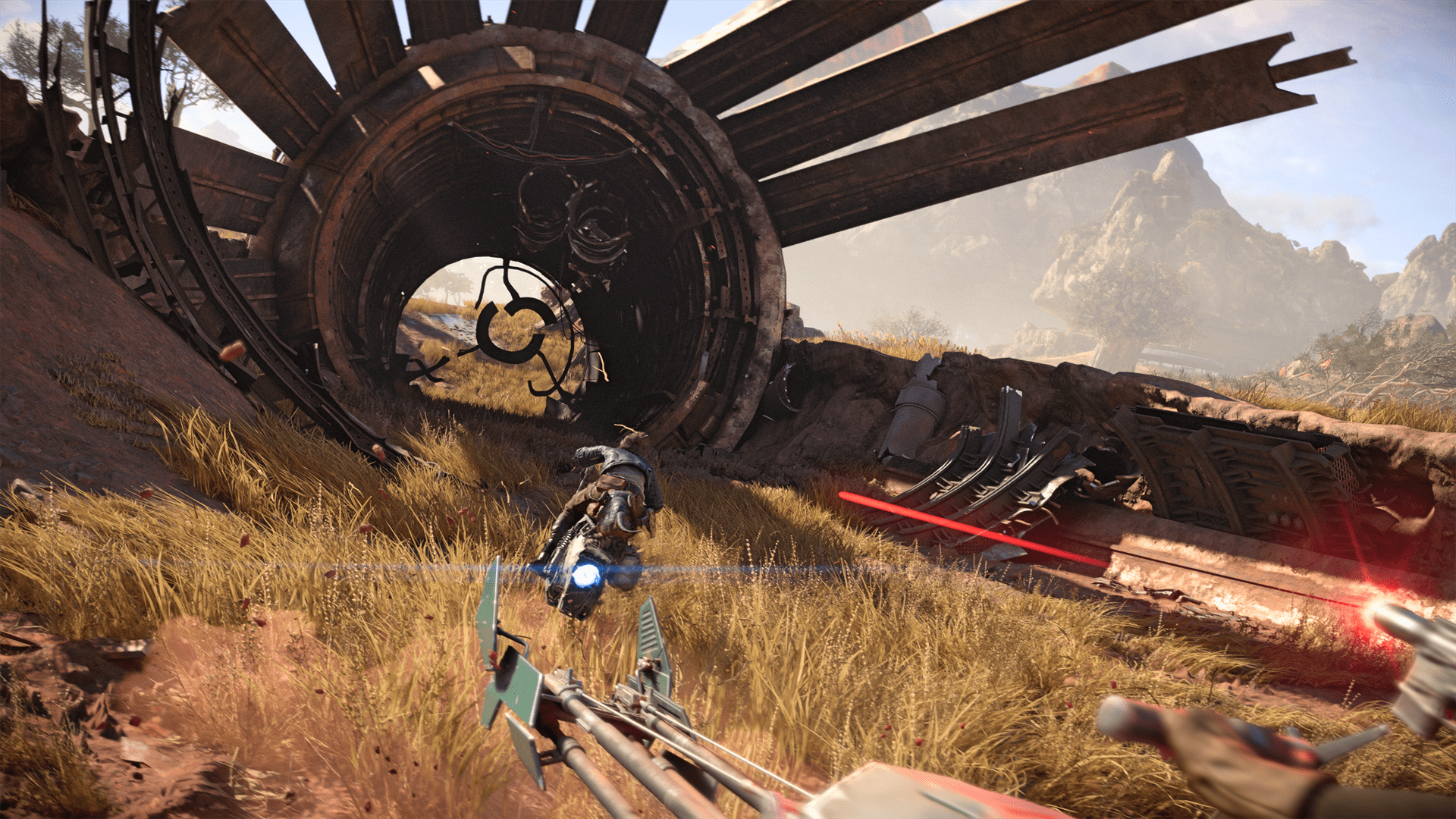
So for each planet, we did what we call World Bibles, that have everything when it comes to things like pillars to the different outer elements or visual pillars of the planet, to the local people, the aliens that inhabit the planets through – anything, you name it, we put that in documentation and hand it over to the team, let them be inspired by this and then suggest through my interest and all of these different things and came up with this. Honestly, it’s hard to summarize all of this process in a few minutes.
But this is basically how it goes. We tested out a few things as well, because we were, of course; you have the Speeder, you have the Trailblazer and the landing pad. You need to be able to access the city with your speeder, and a couple of other things to take into consideration. You have different topography, depending on the planets you’re in . So all of these different elements are, of course, informed experience and what makes Star Wars Outlaws a little special. Anything you want to add in, Samuel?
Samuel: A lot of the artists, as you were saying built The Division as well. When you recreate something for real life, there’s also certain things that you need to add to make it more believable. For example, Simple option, a more simple addition, when you have materials that transition into each other, like the glass into the wood over here.
If you do that in a game, it’s that tenser look? Might look a little bit too pristine. So you might have to, in a worn down world, add a little bit of dust on the transition there to make that more believable. It’s those types of small details where that experience from The Division really comes in handy. But then, of course, there’s the even bigger challenge of creating, it’s a believable world on every scale that’s just a small example.
One of the things I felt was done right was the way you guys managed to populate cities, and by that, Mirogana gave me a sense of that dirty, seedy underworld, while Kijimi was obviously more of a Japanese-inspired theme. Would you say that it was a challenge going from post-apocalyptic to a sense of controlled and populated chaos?
Samuel: So I think I think it’s also making sure that you understand the state that the world is and that you are creating the context, and in that sense, it’s a bit of a similar methodology where in these World Bible it is clearly defined what is going on in this world. What’s going on in the back alleys? What’s going on the squares? And bringing that Into a layer of state of the world in a city like Kijimi, for example, is something that you can bring over from The Division. It’s a similar methodology, but that initial state of the world as defined in the World Bible is, of course, very different. But the idea of applying that layer of context remains the same.
Cloe: Always trying. Everything that we have put in the game, it was the same with The Division. Everything is driven by logic by a story, what story are we trying to tell, if everything struggles, do we leverage the gameplay? So all of these different elements are tied together because the world is really at the crossroads of every discipline. This is where everything comes to play, everything comes together.
We discuss on a daily basis with the narrative team, the design team, the technical team, even the audio team. Because we know that all of this realization scenes, where you have people gambling at a Sabak table where you have people eating at a food store. These type of things will give the world a sense of life and a really immersive experience.
These days, most action RPG-esque titles typically have the “create your own character” option. Again, Division was no different. How did you guys feel when you needed to go the whole “This is Kay Vess and this is what she looks like” route?
Samuel: So for Outlaws, the goal was to create as we mentioned that authentic scoundrel experience, and the team wanted to do that in a time setting and time period that really serves that narrative. So, the time period as we talked about, is between Empire Strikes Back and Return of the Jedi, ideal for a scoundrel. But then as far as the point of view goes, the team wanted to have a very specific point of view of somebody that is really putting their first steps into the Galaxy.
And that’s where Kay Vess comes in, it is specifically Kay Vess, that is telling that story from being a mere thief, to a more full flesh Scoundrel. That also allowed the team to put a lot of care into making Kay Vess a very relatable and a very sort of authentic to the story character, in the way that she is a little bit imperfect, a little bit impulsive. It’s a perfect recipe for a beginning Scoundrel.
So, one of the more blatant questions, if not absolutely cliche questions I will ask is: Where did your inspiration when designing Outlaws come from? For that matter, how much of what you added into the game is canon to the Star Wars universe? I can only imagine you had to go through hoops and bounds in order to do something like creating a whole new planet.
Cloe: No, honestly, it was a really smooth process.
Me: Really?
Cloe: Yeah, there were very few happy to hear what we would suggest, our new ideas, and have a fresh deck on things out. They were very supportive as well, shared a lot of their own information, a lot of their own databank archives, documents. You name it. Whenever we had questions, they’d answer. We’d have weekly calls with them, we even had focus or rather, story groups with their art team. So it really depends on the subject we wanted to discuss with them.
So honestly, it has been a very attractive process because we were all excited by creating this game and this new underworld experience and these new characters. So yeah, it’s been all good.
Samuel: And the team wanted to create an authentic entry into The Star Wars candidates where that collaboration really enabled that. So it’s definitely something that everyone’s very open to.

